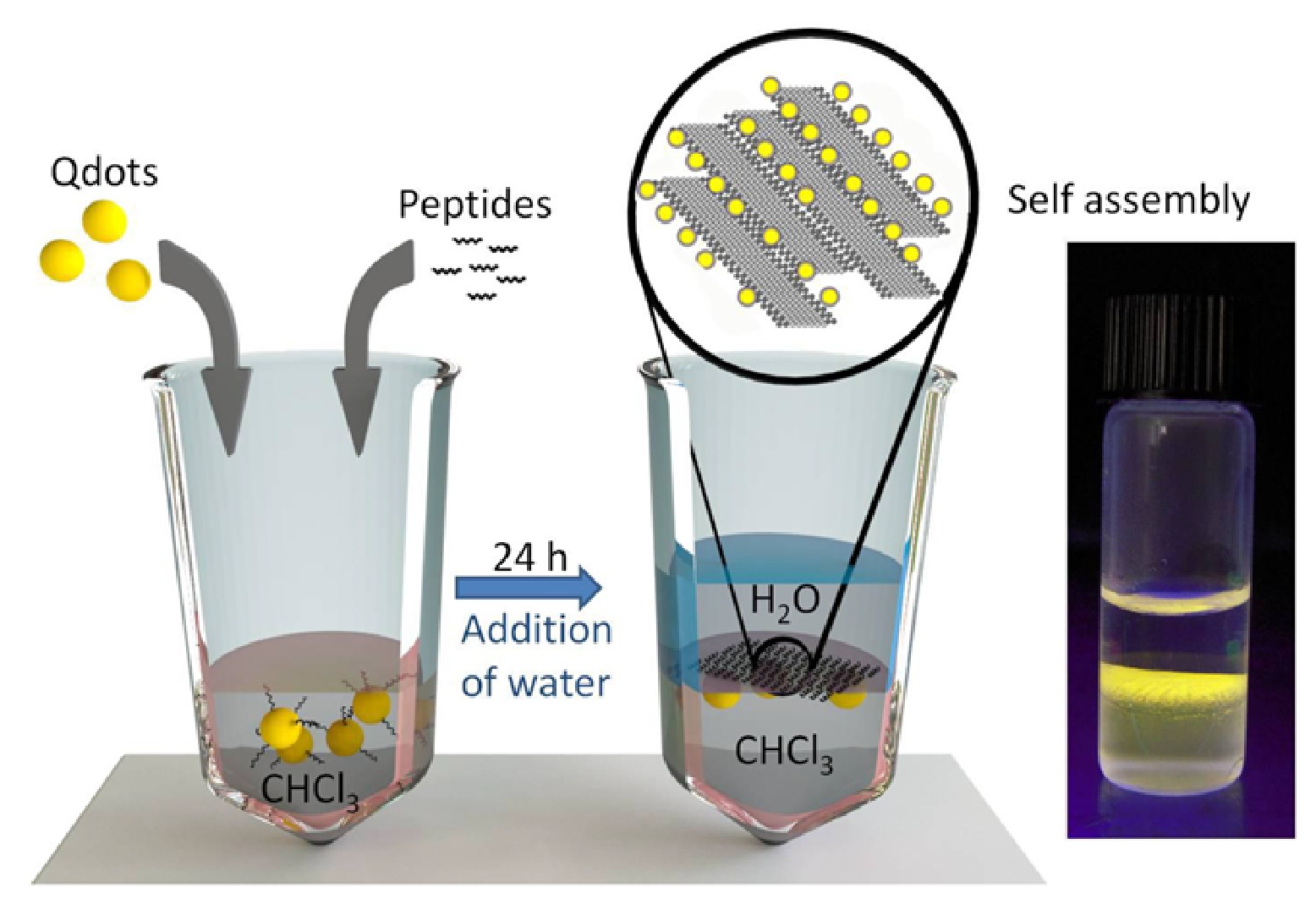Publications
Table of Contents (TOC)
Thin film mesoscale organization of nanoparticles using biomolecular peptide tools
Proc. SPIE 8955, Colloidal Nanoparticles for Biomedical Applications IX, 2014, 89551W doi:10.1117/12.2048292

Abstract
Templating semiconductor nanoparticles’ growth on the surface of biological self-assembled molecules is a promising avenue over the limitations that top-down techniques may impose on device fabrication. We report on two-dimensional ordered structures of preformed TOPO (trioctylphosphine oxide) capped CdSe@ZnS core-shell quantum dots (Qdots) on self-assembled peptide fibrils. An amphiphilic peptide was employed both as ligand-exchange element (via its cysteine residues) and as a structural scaffold for the ordering of Qdots at the water-chloroform interface. We discuss the topological arrangement of the Qdots as imposed by the peptide fibril film and the impact of the assembly on the materials’ photoluminescent properties, which display signatures of long-range electronic energy transfer.
For citations:
Kasotakis, E.; Kostopoulou, A.; Spuch-Calvar, M.; Androulidaki, M.; Pelekanos, N. T.; Kanaras, A. G.; Mitraki, A.; Lappas, A.
Thin film mesoscale organization of nanoparticles using biomolecular peptide tools
Proc. SPIE 8955, Colloidal Nanoparticles for Biomedical Applications IX, 2014, 89551W doi:10.1117/12.2048292